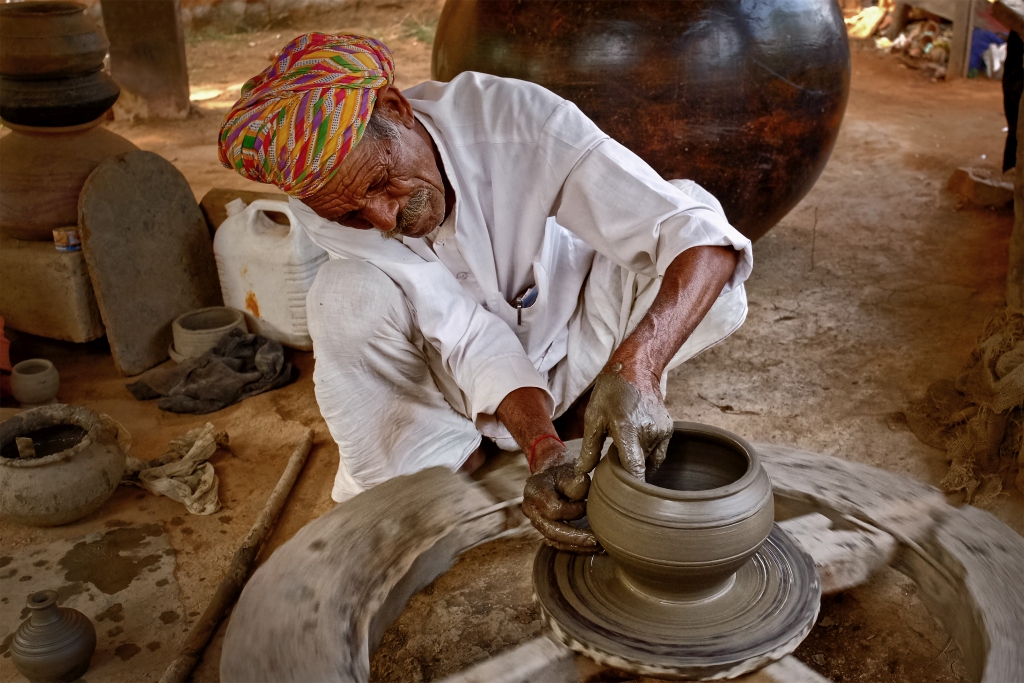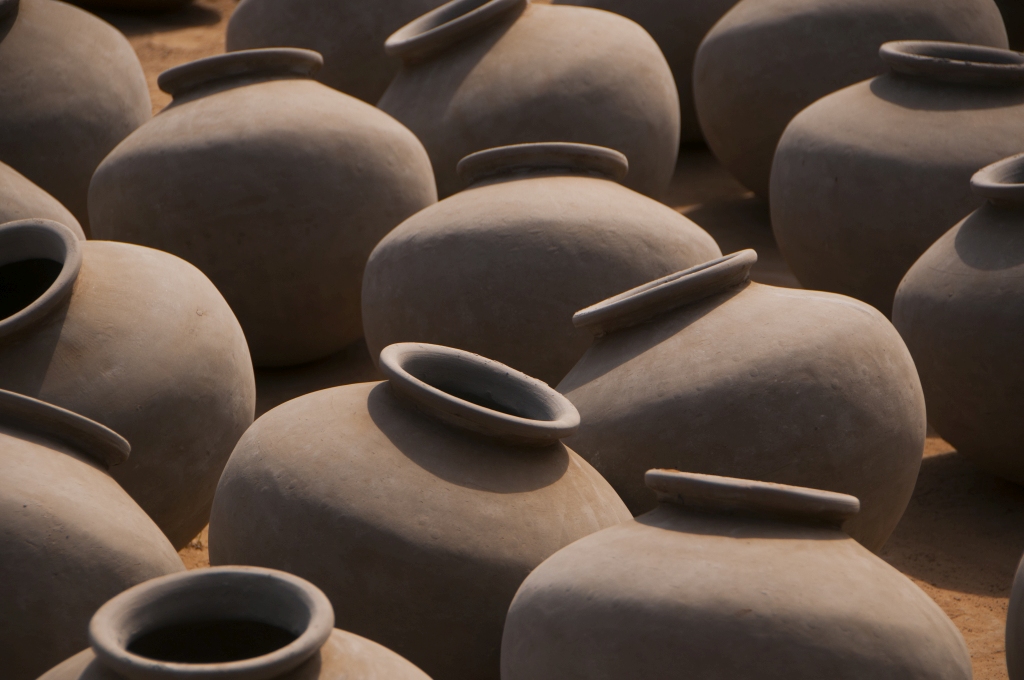Pottery fragments are one of the most common findings from excavations. While in today’s households clay pots have been replaced by their metal and plastic versions, in the past the use of pottery was common for everything from storage to cooking to serving. Because of their wide use, they were made in large quantities, and because broken clay pots were rarely repaired, their fragments usually ended up in the trash. Fired clay hardly vanishes once it gets into the ground, which is why it comes to the surface in such large quantities during archaeological excavations.

Most of the pottery of the Indus Civilisation was made on wheel. In South Asia, two types of wheels are known: one is the single, the other is the double. While the double wheel can be whirled with the feet, to give momentum to a single wheel the potter has to use a stick while crouching next to the wheel. Indian potters still make their pots this way.

In addition to wheel-made pottery, other methods were also known. The large, spherical pots, which are still used in India for storing water, were made with the paddle and anvil technique. The potter rests the anvil on the inside of the half-formed pot, while he taps it from the outside with the wooden paddle until the pot forms a perfect spherical shape.

The clay pot will be durable if it is fired evenly and at a high temperature. The potters of the Indus Civilisation were able to create the right temperature in their kilns, and thus produced very high-quality pottery, in which the Indus trade goods reached even the Persian Gulf region.
Source of images:
1–3: https://elements.envato.com/

